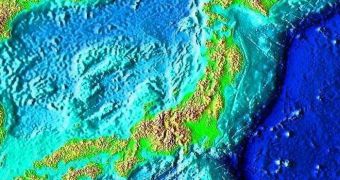When our planet formed, it may have inadvertently trapped some of the gases in its surroundings in pockets inside its newly-formed crust. This interesting proposal was recently made by a group of experts. The team members argued that analyzing the gas could reveal the history of the solar system.
If what they are proposing turns out to be true, then investigators may gain access to reserves of chemicals that have not been seen in the solar system since 4.5 billion years ago. Over time, the medium surrounding the Sun has evolved alongside all planets, and the star itself.
By analyzing primordial gases, scientists may be able to gain a deeper understanding of the way the Sun looked and behaved like when it first formed. These data could then be used to learn more about how Earth itself formed under those conditions.
What the new study revealed is that a family of chemicals called noble gases – which includes neon and helium, among others – can be trapped at subduction zones. These are areas on the planetary surface where tectonic plates slide underneath each other, and sink into the hot mantle.
The investigation was conducted around the Pacific Ring of Fire, an area of tremendous volcanic and tectonic activity where the Pacific tectonic plate is attacked from all sides by other plates. The latter category includes the plates carrying the Americas, Australia, Japan, and others.
Scientists who conducted the study say that the gases are taken out of the atmosphere via geological forces, and that the plates undergoing subduction then carry the chemicals below the planet's crust, Our Amazing Planet reports.
In past studies, experts observed the characteristics of underground neon gas were eerily similar to those of neon recovered from meteorites, hinting at a common origin. What this implies is that the noble gas may have been delivered here by the same meteorite bombardment that cratered the Moon.
Details of the new study, which was led by University of Melbourne Earth scientist Mark Kendrick, are published in the September 25 issue of the top journal Nature Geoscience.
“Our study suggests a more complex history in which gases were also dissolved into the Earth while it was still covered by a molten layer, during the birth of the solar system,” the team leader explains.
“The serpentine rocks are special because they trap large amounts of seawater in their crystal structure and can be transported to great depths in the Earth's mantle by subduction,” he goes on to say.
“Our findings throw into uncertainty a recent conclusion that gases throughout the Earth were solely delivered by meteorites crashing into the planet,” the investigator concludes.

 14 DAY TRIAL //
14 DAY TRIAL //